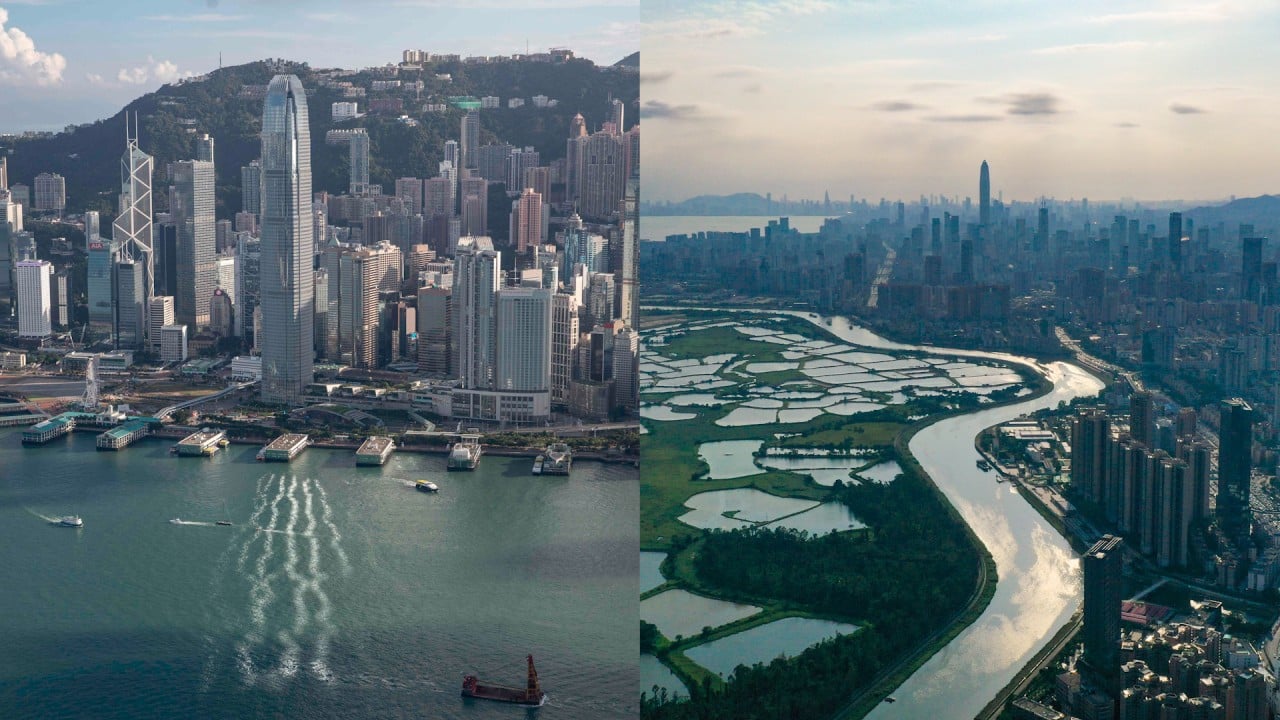
Hong Kong leader Carrie Lam says decision is required on future of its international container port, amid appeals to use the land to help fix housing crisis
- Lam accepts Kwai Tsing port is less competitive than Greater Bay Area rivals, notes land is government’s most valuable resource
- But the chief executive says there are currently no plans to redevelop the site, warns of ‘backlash’
But Chief Executive Carrie Lam Cheng Yuet-ngor said on Wednesday there were no current plans to change the use of the site, describing the matter as sensitive and one that would require strategic planning.
“I am sure it would stir a backlash if the chief executive talks about future plans for the Kwai Tsing Container Terminals,” she said on Wednesday.
Regina Ip Lau Suk-yee, of the New People’s Party, had called on Lam to commit the land to help tackle the city’s housing woes.
“Some industry insiders have said there is excess supply in the [terminal],” said Ip, who also sits on Lam’s Executive Council. “Hong Kong does not need that many container ports.
“Have you considered taking back the 300-hectare plot of land by the sea to build flats instead?”
“There’s a lack of land in Hong Kong, thus driving up our costs,” Lam told a Legislative Council question-and-answer session. “Mainland authorities have also been subsidising the [port] industry, which is something that is difficult to do in Hong Kong.”
Lam said the bay area master plan required the governments of Guangdong, Macau and Hong Kong to improve and integrate their ports and airports.
“The problems have to be resolved sooner or later as it is not a good thing to see the industry continue to be weakened,” she said. “Especially when land is the most valuable resource for us and is also the resource which we lack the most.”

The Kwai Tsing site – located in the northwestern part of the harbour with nine container terminals and 24 berths – has for several years been eyed for its potential to help ease the city’s housing crisis.
In 2018, the Task Force on Land Supply, a government-appointed committee charged with finding options for addressing the dire land shortages, discussed relocating the 380-hectare port to make way for housing. It also looked at building homes on elevated platforms above the terminals.
Noting there was little support for the latter, it designated relocation as preferable and suggested the government explore that option.
The task force said the city would face a 1,200-hectare shortfall of land in the next three decades, with massive reclamation works the way to tackle the problem.
Hong Kong Seaport Alliance, a contractual joint venture formed by four of the five container port operators at Kwai Tsing Container Terminals, said the port and logistics industry were an important economic pillar of Hong Kong, making significant contributions both to the economy and employment for decades.
In 2019, the industry contributed 2.9 per cent – or HK$82.7 billion – of the city’s gross domestic product, employing about 180,000 people, the alliance added.
“The high efficiency and flexibility as well as its free port status have been Hong Kong’s competitive edges as an international maritime centre. All terminal operators in Hong Kong have been working hard to enhance the competitiveness of the port,” the alliance told the Post.
Wong Yu-loy, organising coordinator of the Union of Hong Kong Dockers, an affiliate of the city’s Confederation of Trade Unions, said the efficiency levels of the local container terminals and the city’s advanced legal services sector meant its facilities could not be replicated in other parts of the bay area.
“It could take dozens of years to build a mature container terminal popular among foreign businesses. Why doesn’t the government resolve the housing problem by developing brownfield sites instead?” he said.
Wong warned the livelihoods of about 6,000 people working in the Kwai Tsing Container Terminals would be affected if the site was demolished.
The Port of Hong Kong’s throughput – or the amount of cargo handled – dropped from 19.6 million twenty-foot equivalent unit (TEU) in 2018, to 18 million TEU in 2020. Shenzhen’s throughput stood at 26.5 million TEU that year, while Guangzhou recorded 23.5 million TEU.



